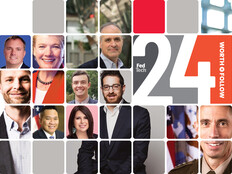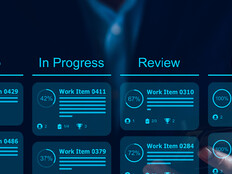With the announcement that the Office of Personnel Management will become the third agency to participate in the federal Centers of Excellence program, the plan to create more collaboration and cooperation during the government modernization process continues to set an example.
The CoE program, a signature White House initiative administered by the General Services Administration, embeds staff in participating agencies to help with IT modernization efforts.
The program focuses on specific areas of transformation, including cloud adoption, contact center, customer experience, data analytics and infrastructure optimization.
MORE FROM FEDTECH: Find out how federal IT leaders can adapt to accelerating technology.
Why Partnership Is Important for IT Modernization
From the beginning, the program has emphasized the importance of working together on IT modernization. One of the program’s five values is “collaborate for success,” which GSA defines as the recruitment of the “best and brightest from our customer’s workforce to co-lead modernization efforts and ensure success, and longevity, beyond CoE engagements.”
Other values — including “innovate from within,” “rely on best practices” and “centralize our resources” — highlight the importance of drawing on existing expertise and infrastructure.
There’s a consensus across organizations that collaboration is critical for optimizing IT infrastructure and operations. But collaboration also breaks down the silos that lead to inefficiencies. “The Digital Transformation Insight Report” by CDW, for instance, found that 19 percent of respondents were sending members of their IT teams into their business units so that each could get experience in the other’s specialty, much as the government is doing with its CoE program.

GSA Works to Foster Collaboration in Federal IT
“Forget about rigid business processes and system siloes,” the CDW report states. “Organizations must … reinvent corporate culture to support enterprisewide digital transformation.”
Joanne Collins Smee, former director of Technology Transformation Services, discussed the need for collaboration before she returned to the private sector.
“Bringing in outside expertise and experience is an important part of understanding modernization,” she wrote in a GSA blog post. “Solving the most complex problems in IT requires soliciting a diverse range of skills, perspectives and personnel.”
It’s easy to talk about improved teamwork without taking any action, but collaboration is actually baked right into the CoE model. Employees from GSA provide leadership, subject matter expertise, external perspectives and access to cross-government networks.
Meanwhile, agency team members provide an understanding of internal processes, culture and nomenclature, as well as access to an internal network of stakeholders.
Finally, industry partners also provide technical expertise, best practices and resources.
“Digital transformation usually involves new partnerships and skill sets that the organization hasn’t needed before,” writes Link Simpson, senior manager for digital transformation and IoT at CDW, in the CDW report.
Collaboration is critical to IT modernization, which should move at a pace quicker than government is used to. The sharing of ideas and talent greases the wheels and encourages innovation. Agencies are discovering the satisfaction of this kind of work. Top officials in the CoE agencies regularly speak glowingly of the cooperation and collaboration they’ve seen.
Agriculture Department Deputy Secretary Stephen Censky says that USDA’s work with GSA led to $26 million in savings during the agency’s first year as a CoE. “We’re able to sprint in these areas and develop talent and expertise,” Censky said. “When the CoEs move on, we have that institutional knowledge.”
Modernization is not just about improving on the past; it’s about looking toward the future.











